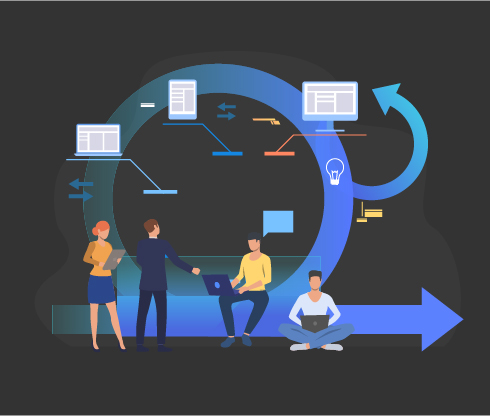High-level estimation is the process of sizing your backlog. How “big” is the project, and what value does it deliver? Prioritization is the process of deciding which stories are most important to you, the viability of the product, and the interests of your customers. We want to deliver the highest value items earliest to deliver the most value to the business, get feedback from the customer, and to not sweat the small stuff. The output will be an ordered backlog that is ranked in priority and sized appropriately.
· Stories at the top are considered most valuable. We want to deliver the most valuable items as early as possible.
· There are many techniques for sizing and estimating, but at this point, you just want to get a good indicative feel of the size of a story.
· Use t-shirt sizes, relative sizing, ideal days, or story points.
· You won’t have all the available information at this point either, and that’s okay. Just run with it.
· Engage your business stakeholders or product manager if you have one, and the team that will be doing the work.
· We want those that will be designing, developing, and testing the work to size it, because the best people to estimate are the experts.
· The team may start to break stories down into smaller parts. If this happens, write stories that are more granular but discrete.
· The team may also start to rank some stories, as naturally some things have to get delivered before others to support the technology or a given user journey.
· Between you and the team, you may also start to find holes in the backlog that need to be filled. Just fill those holes with new stories and estimate and prioritize as appropriate.
· Prioritization is most easily performed using a MoSCoW analysis. MoSCoW is a simple technique that helps you decide which stories are “must haves” for your product to be successful.
· You may do a prioritization pass before estimation begins. However, the sizing of certain elements may also determine a decision on priority and real business value. So play estimation and prioritization off of each other, but don’t squabble over it!
· No two stories can be as important as the other. The story at rank 1 is more important or valuable than the story at rank 2.
· A great way to demonstrate the importance or value of a story is it to add a monetary value to it. If for example, story A is thought to bring in $5000 of extra revenue, and story B might attract $100, then story A is more valuable. Equally, if story C saves the business more than story D, story C is more valuable.
· Once you’ve sized your backlog, you’ll be left with a number. When we come to release planning, that number will help us understand how much can be delivered by our team within a given timeframe.
Remember that you don’t need to know all your user stories up front. Also, remember that it’s not necessary to deliver all of your stories before a customer sees your product. You want to remain Agile—and that means only creating what you need to when you need to, wasting as little as possible, and responding to changes in customer needs and market conditions. A roadmap will help you lay out your product and plan your objectives for the next 3, 6, 9, and 12 months.


